The Bezold Effect - What do you mean your red is different from my red?
Updated on 20th October, 2022
Definition of The Bezold Effect
You may be surprised at how easily our vision can be warped by the mere action of substituting colors - Welcome to the Bezold Effect. Also known as the assimilation effect, the Bezold effect is a quirky optical illusion wherein a particular color's hue can change depending on the other colors surrounding it. How is this possible, you may ask?
Colors should not change, they remain the same. In our minds, we know that each color has its own intrinsic value that is not subject to change, where red will always be red, and blue will always be blue. However, the Bezold Effect says otherwise and quickly exposes the faulty nature of this reasoning. According to the Bezold Effect, not only are colors subject to change, but they are also related to one another as the change of one hue can engender change in another. Unfortunately, the Bezold effect is another illustrative example of how our perceptions are malleable and shows us that what we see is highly dependent on how our brain processes visual information.
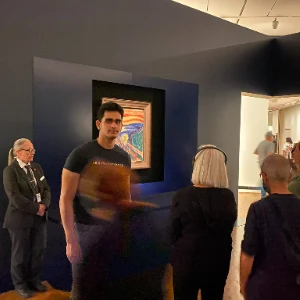
Did you know? – Color is actually subjective! Basically, how people perceive colors can vary from person to person. An object does not possess any intrinsic color specific to it, but rather, it is our brain that decides which color to attribute to it. Think of color as a sensation. It touches our eyes through light, where it gets registered by our retina and sent to our wonderful brain for processing. Once processed, our brain's visual system will decide on a color. The key word here is “decide”.
The Bezold effect plays into this process and manages to shift our color perception using surrounding colors. Simply substituting a single color in an image can cause the other colors to appear altered, and although the Bezold effect is just a harmless optical illusion, it shows how the simplest change in color can alter our perception of reality.
What is the Bezold Effect?
We encounter the Bezold daily as our visual perception is permeated with contrasting colors. Essentially, we are unknowingly being caught up in a perpetual cycle of Bezold…ness. The Bezold Effect has many overlapping elements with Josef Albers' concept of color relativity . Albers characterized colors as deceiving, passive, and highly unstable, and he also thought of colors as having a particular “behavior.” This description of colors is what the Bezold Effect displays by demonstrating that colors are not strict but, instead, highly fluid in nature.
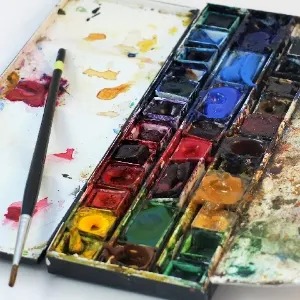
Simply put, the Bezold Effect shows that the colors we perceive in our visual field are all related to one another, where the simple substitution of a single color will cause a change in perception of the rest. This reveals a special relationship between the colors we see because when one changes, so do the others. However, it should be noted that not all relationships are the same. Some colors may appear lighter than others, depending on the darkness or saturation. In contrast, others might appear darker or more saturated depending on the other colors they are surrounded by. Researchers in psychology and neuroscience have tried to figure out why the visual system in our brain is so sensitive to the Bezold effect. However, the answer still remains a mystery to this day.

History of the Bezold Effect
The Bezold Effect was named after its discoverer, German meteorologist Wilhelm Von Bezold (1837-1907). Von Bezold realized that he could change the entire appearance of a design just by switching one color, which subsequently affected the appearance of the other colors.
Like most illusions, records say Von Bezold stumbled upon this one by chance. The meteorology professor had taken up a personal home décor project and set out to design a colorful rug for his home. However, he could not settle for a particular color combination for it, and being the rigorous academic that he was, he undertook a series of experiments where he added and subtracted colors until he achieved the desired effect. After a few tries, he quickly saw that the change of a single color transformed the entirety of the rug design. Perplexed, he repeated this process multiple times to confirm that he was not, in fact, deluding himself. Surprisingly, the bizarre outcome remained, and the Bezold Effect was born.
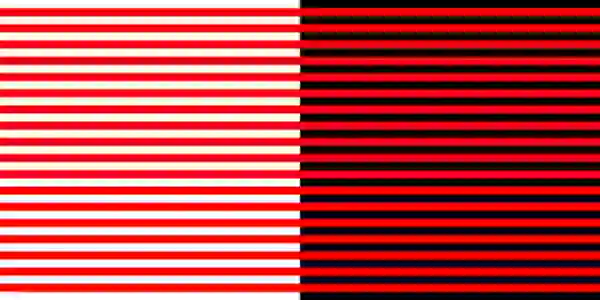
Upon its discovery, many quickly shut down Von Bezold’s findings by arguing that the Bezold Effect was essentially the same as the previously discovered simultaneous color contrast effect. However, after comparing both effects, scientists found one stark difference. In the simultaneous color contrast effect, a color will adopt the hue and brightness of the surrounding colors, whereas in the Bezold Effect, the perception of the surrounding colors is dependent on a single dominant hue. Put simply, only one hue within the color contrast effect is subject to change whereas, in the Bezold Effect, it is every single surrounding color!
Did you know? – The Bezold Effect only works under certain circumstances! You can’t produce the effect by simply adding or subtracting colors; certain special parameters must be set up for the illusion to occur.
Case Examples of the Bezold Effect
Case 1:
A prominent example of the Bezold Effect in action is Edvard Munch’s “Bezolded Scream.” In this image, two red “Screams” are placed behind vertical blue and yellow lines, and although they are the same color at the base, they appear drastically different next to each other. One face looks purple, whereas the other looks orange. This is the case because on one side, our eyes are mixing the red scream face with the blue lines to make purple, and on the other side, our eyes are mixing the red with the yellow to make orange.
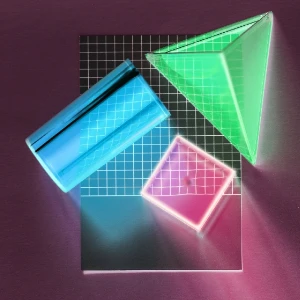
Confusingly, once we remove the blue and yellow lines, both “Screams” appear to be the exact same color. Even if we squint our eyes and try our hardest to look past the colored lines, our brain is still unable to override the Bezold Effect, and we remain shamefully subject to this simple yet potent effect.
Case 2:
Dadamaino (1930-2004) was an Italian visual artist and painter known for employing her illusory painting techniques to create works of art that would play with people’s visual perceptions. She began painting this way because she had met the father of Spatialism (i.e., an art genre) in her early career, leading her to plunge into the world of space and dimensions.
She frequently used the Bezold Effect within her paintings to add additional distortions of color, which would further compound the geometric distortions within her paintings. Her acrylic painting Ricerca del colore marrone su rosso (1960-1970) is the perfect example of her utilization of the Bezold Effect. Dadamaino painted two distinct backgrounds (one lighter and one darker) behind a series of horizontal red lines. Due to the contrast of the backgrounds, the red lines, which were of the same color, appear to be different, with the lines on the left being darker and the ones on the right being lighter.
Case 3:
American visual designer Alvalyn Lundgren teaches graphic design and visual branding courses. She shows how we can exploit the Bezold Effect to attain any desired effect we want from a particular painting or drawing. For example, if we seek to imbue a design with a lot of energy, substitute several colors until the Bezold Effect creates the desired amount of activity within the design. To create balance in darker and heavier colors, one should use smaller bright, and light colors. The information she teaches could be useful for artists who want to make a statement and attract anybody with this confusing yet intriguing phenomenon.
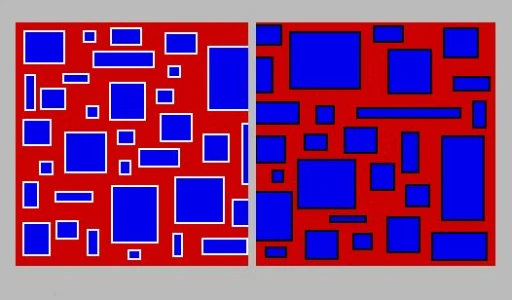
A Beautiful Quote
- Andy Warhol
Questions and Answers
How was the Bezold Effect discovered?
The optical illusion known as the Bezold Effect was discovered by Wilhelm von Bezold (1837 – 1907). He found the effect by chance while making designs for rugs and saw that the color of a design could change simply by changing the surrounding colors.